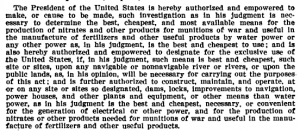 What do the Nazis, a Norwegian hydroelectric plant, and the saltpeter caves of southwest Virginia (including Cudjo’s) have in common?
What do the Nazis, a Norwegian hydroelectric plant, and the saltpeter caves of southwest Virginia (including Cudjo’s) have in common?
The ability to make heavy water.
Water contains hydrogen. Normally, the hydrogen in water contains no neutron in its makeup, just a proton. Heavy water, however, contains hydrogen that has the added “weight” of a neutron in addition to the proton, hence the name “heavy water.”
Deuterium is another name for heavy water.
During WWII, Allied forces learned of Nazi interest in a Norwegian hydroelectric plant that also produced fertilizer (specifically, calcium nitrate, or saltpeter). Heavy water, or deuterium, was a by-product.
To Norwegian Resistance fighters during World War II, heavy water was a mysterious substance considered so perilous that they were willing, under orders from the Special Operations Executive in London, to sacrifice the lives of their countrymen in order to keep it out of Nazi hands. – (1) PBS, Nova, “Hitler’s Sunken Secret”
The Allies surmised the Nazis wanted the factory for its by-product of deuterium, which is critical to creating weapons-grade plutonium-239.
I believe the United States knew of the potential of creating fertilizer with hydroelectric power when the National Defense Act of 1916 went into effect.
Col. J.W. Joyes…was instructed to inspect sites [for the location of the nitrogen/fertilizer plant] extending from Roanoke, VA., to certain Alabama sites…(2) 66th Congress, Second Session, War Expenditures Ordnance
The nitrate supply committee recommended this to the 66th Congress:
That the construction of the initial plant be started at once at some point to be selected by the War Department in southwest Virginia or adjoining territory in West Virginia reasonably near to the sulphur, sulphuric acid, and coal supplies of that region. (2)
The hydroelectric U.S. Nitrate plant was eventually built in Sheffield, Alabama with the help of a Norwegian named Berg. (I suspect it is the same Berg who would later be associated with the Vemork plant in his home country.)
Clearly the experts thought President Wilson was misguided when he chose the Alabama location:
Why the President selected the site at Sheffield Ala., for nitrate plant No. 1, contrary to all reports and recommendations, is not known. (2)
I think the President chose Sheffield Ala. to direct attention away from the southwest Virginia saltpeter caves and the real work of munitions production. He visited Lincoln Memorial University in 1918 under the guise of receiving an honorary law degree. (8) It’s certain the trip was actually a visit to the saltpeter/nitrogen operations in Cumberland Mountain, a few short miles away.
It is important to note that TVA was successful at large scale fertilizer production in the Alabama plants (see Dr. Jeremy Whitlock’s statement near the end of the blog post.)
Below describes the way limestone is used to help manufacture saltpeter:
[Nitric] acid can be neutralized with ammonia to form ammonium nitrate or with calcium hydrate to form calcium nitrate (Norwegian saltpeter).
and
…we allow the acid to pass through open towers, filled with limestone, and afterward we destroy the small amount of remaining acid…. (3) Chemical and Metallurgical Engineering, Vol. 24
According to the above journal, this process takes 15,000 tons of limestone, 500 tons of lime, and 2500 tons of soda to produce 29,000 tons of saltpeter.
The November 2001 issue of Virginia Minerals “Geology and History of Confederate Saltpeter Cave Operations in Western Virginia” states:
In the 1860s the southern war machine benefited immeasurably from the conditions of climate, vegetation and geology that gave it the greatest concentration of saltpeter cave deposits in North America. (4)
Luckily for the U.S. Government limestone was abundant in western Virginia as well:
Cumberland Mountain has an extensive limestone cave system on the Virginia side. – Sherpa Guides, “Highroad Guide to the Virginia Mountains” (5)
But the government struck a home run when they discovered a small college named Lincoln Memorial University already had a hydroelectric plant deep inside one of these limestone saltpeter caves: Cudjo’s Cave.
…an active stream runs inside the cave, and was harnessed for drinking water and hydroelectric power. – us-highway.com (6)
It is unknown if it is the same hydroelectric plant mentioned in the 1911 edition of Southern Electrician:
Plans are underway for the erection of a hydro-electric plant for the purpose of supplying power to manufacturers near Cumberland Gap. The plant will be located on the Cap creek.(9)
It is not known if “Cap” is a misspelling of “Gap”.
All three elements needed to produce deuterium are located right here in southwest Virginia: the naturally thriving saltpeter, a catalyst (limestone) that would replenish and produce even more, and the power of hydroelectricity.
I asked Dr. Jeremy Whitlock, a Canadian reactor physicist with decades of experience, how the massive amount of heavy water needed for pressurized heavy water nuclear reactors, or PHWRs, is produced today:
In the future if industrial-scale production is needed again (and I hope it is), we will likely use a catalyzed exchange process attached to an existing process based on electrolysis or hydrogen reformation (e.g. fertilizer production). (7)
SOURCES:
1. http://www.pbs.org/wgbh/nova/hydro/water.html#h06
2. http://tinyurl.com/sheffield-nitrate
3. http://tinyurl.com/chemical-saltpeter
4. http://www.dmme.virginia.gov/commercedocs/VAMIN_VOL47_NO04.pdf
5. http://www.sherpaguides.com/virginia/mountains/app_plateau/cumberland_mountain.html
6. http://www.us-highways.com/cgap25.htm
7. Personal email, April 9 2015; copies available upon request
8. http://tinyurl.com/wilson-at-lmu
9. http://tinyurl.com/hydro-electric-gap
Heavy water was made in large commercial volumes at the Savannah River Site from around 1955 to the mid 1980 when the plant was shut down.
There is no such thing as a pressurized heavy water reactor. Pressurized water reactors use light water, heavy water reactors have no useful purpose other than to create weapons grade Plutonium there are none operational now in the U.S. or most of the rest of the world save Iran and Korea.